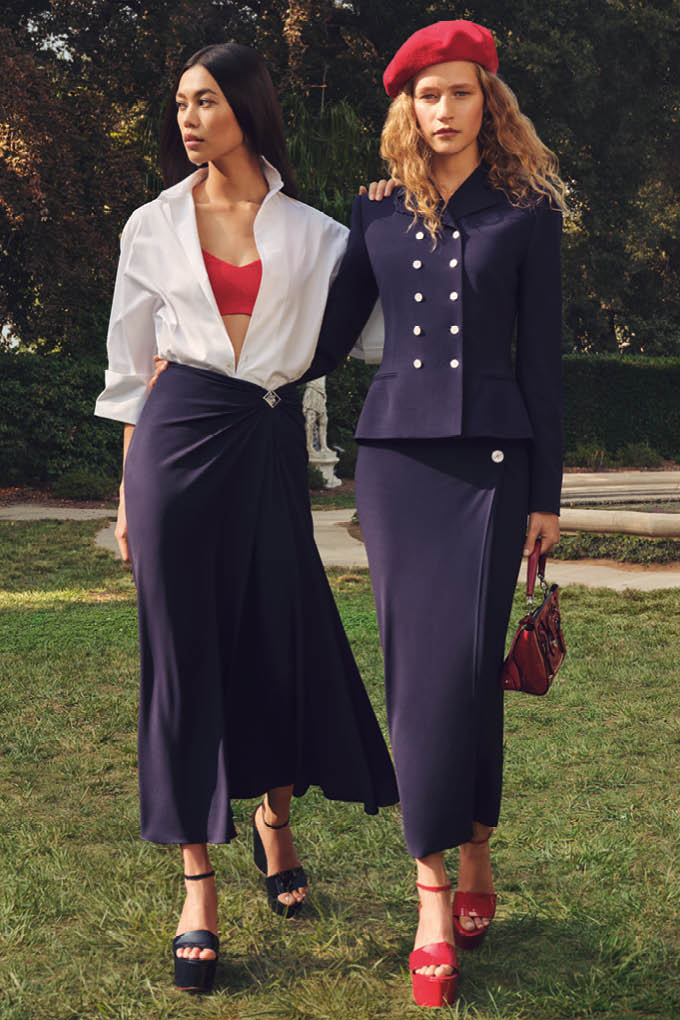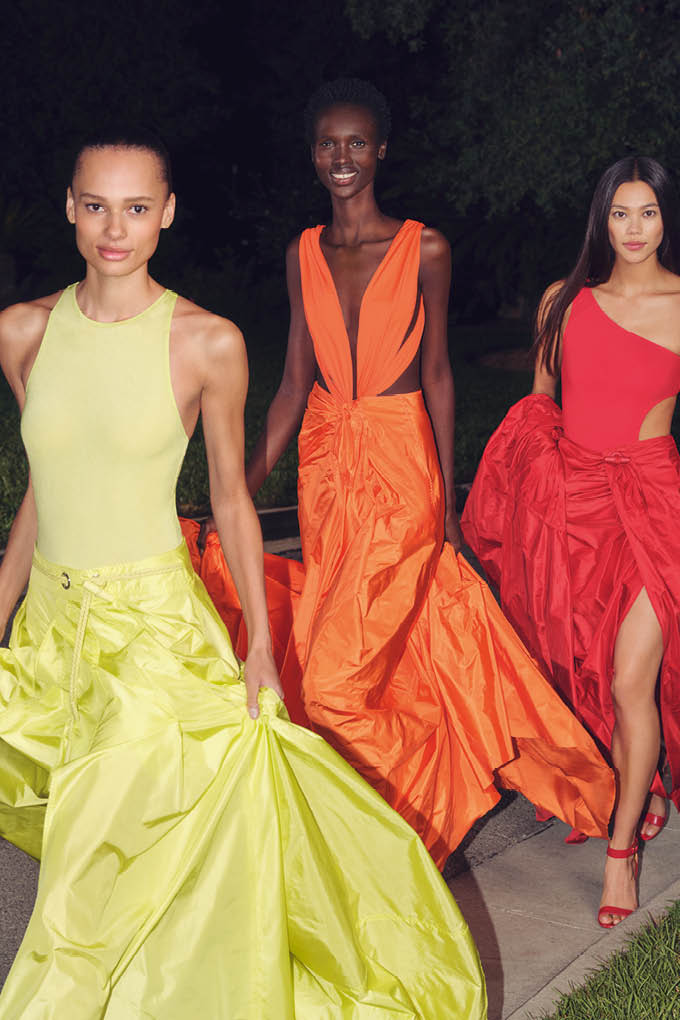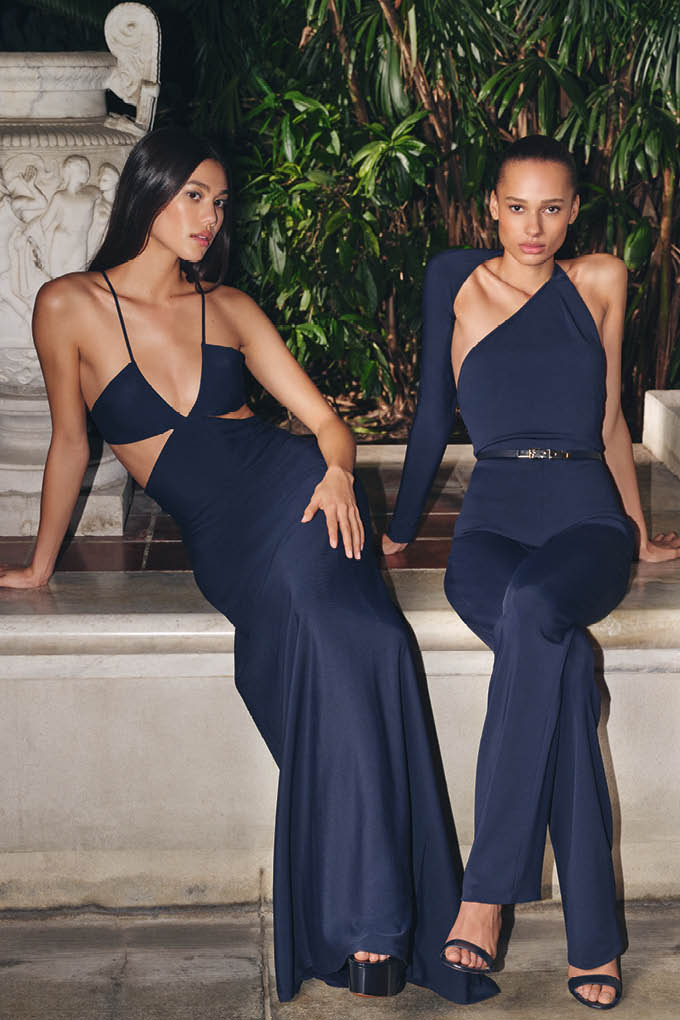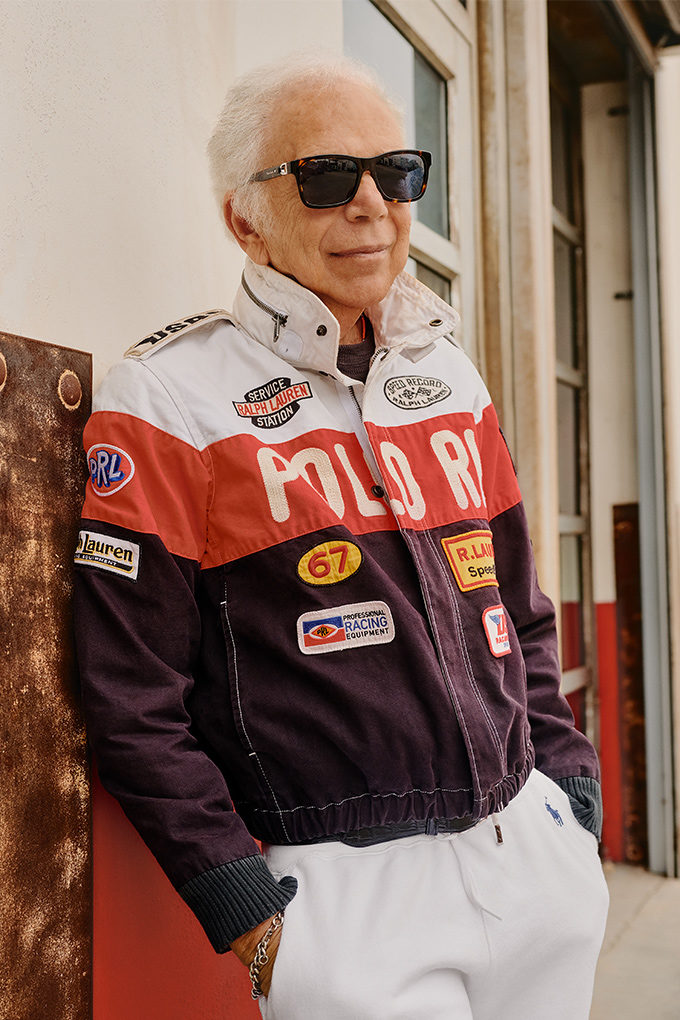At first glance, Ralph Lauren’s high-rise head office on Manhattan’s Madison Avenue—a great big tower of glass and steel aggressively jutting skywards—doesn’t really tally with, well, Ralph Lauren. Until that is, the lift doors slide open on the sixth floor and you’re immediately enveloped by what looks like Ralph Lauren’s flagship on Bond Street—all cosy and low-lit with wood-panelled walls, moody oil paintings, and love-worn leather sofas scattered with plaid cushions. They’ve even built a sweeping mahogany staircase into this modern skyscraper, to connect his design teams across its multiple floors.

Along a wide corridor is Lauren’s office. It’s overwhelmingly cluttered with curios, so much so you don’t know where to look first, let alone have any clue about where to set down a tall glass of water. Books are piled high on every surface; framed artworks, magazine covers and awards line the floor, propped up against all four walls. Look up and there are two ’50s plane models crafted in what looks like parchment paper, which swoop above a vintage-looking shiny black bicycle (a gift, never ridden). Silver-framed photographs of his impossibly good-looking family—his wife, Ricky, three children, Andrew, David and daughter Dylan, and five grandchildren—cover the desk, along with other knick-knacks such as a pair of tiny cowboy boots, and an array of tin robots, toy cars and helicopters. A space no bigger than a dinner plate is left bare (probably not for Lauren to actually have lunch here, because why would you when you have your own Polo Bar restaurant a few blocks away and the promise of Ralph’s filet mignon).
“It’s mine, and it’s something I built. I’m proud of it because I built it with integrity and taste.”
“Hello,” he says welcomingly, walking over to greet me. Charismatic and softly spoken, he’s slim (he works out with a personal trainer for 90 minutes every morning) and wears distressed bleached blue jeans, a shirt and tartan blazer, and box-fresh white sneakers; his aquamarine eyes are all the more twinkling against his tanned, lined skin. He just returned from LosAngeles, where he presented his spring/summer ’23 collection—remarkably, it was the first time he has staged a show on the West Coast—attended by Jennifer Lopez and Ben Affleck, John Legend, Laura Dern and Diane Keaton (a friend since the ’70s, when he dressed her for her role in Annie Hall).

As ever, the collection had all the touch points of classic American style with a hint of Englishness: cowboy boots worn with flirty prairie dresses, rugged Navajo-style blanket skirts, preppy sweaters with crisp white tennis shorts, tailoring and Old Hollywood glamour by way of sinuous, floor-skimming evening gowns. “The reason it works, and still works, is because I am who I am. I am the product,” he says. “If you like my style, you will like my clothes.”
Here’s the truth: it isn’t, and has never been, about fashion. Lauren has always been more interested in lifestyle, in the life lived in the clothes, which has undoubtedly added to the sum of his success over the years. He urges you to dream. When you buy a Ralph Lauren sweater, you’re not only buying a sweater, you’re buying into a world of refinement and good taste, of chiselled jawlines and flawless skin, where everyone owns a horse and a sports car, and picnics on immaculately manicured lawns—and yet somehow it all manages to look terribly attainable.

To that end, he has always worked more like a film director than a designer. “I’m not Karl Lagerfeld,” he acknowledges, adding that the late Chanel creative director once told Lauren he should have been president. Probably he wasn’t wrong. “I liked Karl a lot,” he says. “Karl was a designer and he was unique, but I don’t see myself as that. I see myself as,” he pauses, “a cool guy.” His memory for names may have been letting him down lately, but his self-belief shows no sign of waning, and nor should it.
“It starts with being who you want to be when you’re growing up. I dreamt like everyone else about a life that was good.”
Today Ralph Lauren Corporation is worth more than US$7.4billion, and although he stepped down as CEO in 2015, he remains executive chairman and chief creative officer and presides over every line: Ralph Lauren Collection, Polo Ralph Lauren, Purple Label, Double RL and more. There are 1,246 directly run Ralph Lauren stores and concessions globally, five restaurants, and numerous coffee shops. “It’s mine, and it’s something I built. I’m proud of it because I built it with integrity and taste, but one doesn’t really feel everything that you’d think you would feel. I’ve always worked hard; I don’t rest on my laurels.”
There is very little Lauren, 83, hasn’t seen or done; Audrey Hepburn, a film-star heroine of his childhood, has handed him a Council of Fashion Designers of America lifetime achievement award, he’s hung out with Cary Grant at the race track, and he’s given advice to Frank Sinatra. “It starts with being who you want to be when you’re growing up. I wasn’t wealthy—not poor, but not wealthy—I dreamt like everyone else about a life that was good. I wanted a house in the country, I wanted a racing car; they were boyhood dreams that I turned into a reality.”

Born Ralph Lifshitz in 1939 (he changed to ‘Lauren’ afterLauren Bacall when he was 16 years old), he was the youngest son of Jewish immigrants from Pinsk, now in Belarus. His father was an artist, but more often would make ends meet painting houses.“When I was growing up, I loved John F Kennedy, people that stood out to me as being special, they inspired me to be something more.” He wasn’t a top-grade student and he wasn’t particularly interested in fashion (he didn’t go to a fashion school). He still isn’t (he rarely looks at other designers and what they’re doing), although he remembers reading a newspaper article on Yves Saint Laurent. “I admired him, I found it interesting that he was in his 20s. I didn’t necessarily like his clothes but I liked his greatness. He had magic.” Success is something he always recognised and that deeply resonated with him even at a young age, growing up in theBronx. His passion was films, and the starry appeal of leading men such as Steve McQueen and Paul Newman. “I always liked the kind of actors who would wear my clothes. It’s why there is always a narrative to Ralph Lauren: he’s a storyteller who conjures the kind of optimistic world that the world wants to live, to belong, in.”
“I never wanted to do what everyone else was doing.”
He has spent his five-decade-plus career as master purveyor of the American Dream but he’s also the embodiment of it. His story is well documented: an aspirational young man who started out designing and selling neckties and saying no to Bloomingdale’s when it wanted to place an order, but on condition that he made the ties narrower. Most other start-up designers would have fist-pumped the air and asked, “How narrow?” NotLauren. “I said, ‘I can’t’, and then I walked out,” he recalls of the story he never tires of telling. “They came back six months later and said, ‘We want to buy your ties’.” That small collection of ties racked up sales of half a million dollars in its first year. “So they said, ‘What else can you do’? I was only a kid but I knew ties weren’t enough; I knew someone would knock them off, so that’s why I did shirts next, and then womenswear. It wasn’t trendy, but it was new, and that’s what I’m about,” he summarises. “I told Bloomingdale’s, ‘Give me a shop. Let me do it’.” He opened his store there in 1969.

For all of his classicism, it is easy to underestimate how pioneering Lauren was. “I never wanted to do what everyone else was doing. If someone has already done something, then it doesn’t interest me. I didn’t know that any of it was going to be successful but I did know that if I wanted something, then other people would want it too. It was all instinct,” he says. He was the first American designer to open a freestanding boutique in the US (inBeverly Hills, 1971), and he had a presence in Europe way ahead of any other American designer. Furthermore, he has long embraced diversity and inclusion “because I believed it was right”, and his casting has always included all ages and races—a concept most of the industry is only now beginning to understand. He was also the first fashion designer to launch homeware, in 1983, another innovative move that he simplifies with a shrug: “I mean, I know I’m not an interior designer but I know how I want my homes to look.”
“It’s not about newness or oldness, it’s about timelessness and the way you wear it that makes it better.”
Of these there are several. He spends weekends with his family at their mansion in Bedford, New York. (When asked the secret to his 58-year marriage he answers with a knowing smile,“You would have to ask Ricky.”) There is also their 6,475-hectare ranch in Colorado, a home in Jamaica to holiday in, and a vast collection of sports cars to play with—“a bad habit”, albeit a brilliant investment said to be worth hundreds of millions. As far as his own celebrity is concerned, Lauren now prefers a quieter life. “I used to like to be stopped, to be looked at, but I don’t like it now. Sure, it’s nice to get seated in a restaurant, but I like more privacy these days.” Obviously his success has given him wealth, but he has given plenty back: he has a long history of supporting organisations dedicated to the fight against cancer. The company has donated millions to breast cancer care and research, from Harlem to Royal Marsden Hospital in London. It also supports initiatives increasing access to education and advocacy for underserved communities.

It’s clear he has no interest in slowing down. He goes to the office five days a week and remains as driven as he has ever been. “I like building new things” is how he puts it, whether that’s collections, restaurants or stores. “I still do it because I don’t feel like quitting.I love what I do, it feels good.” Our conversation, unsurprisingly, turns to succession, but he’s vague on the details. “I have a lot of good talent, some have been here for 30 or 40 years; they’re very loyal because I take good care of them. But I really don’t think about how the brand will look when I’m no longer here, what it might be like in 20or 30 years. I’m not concerned about it. I design for forever, it’s not for ‘fashion’, the clothes get better with age. It’s not about newness or oldness, it’s about timelessness and the way you wear it that makes it better; not necessarily the clothes but how you put them together. I like things that last; clothes, cars, I like life that lasts. I know life is short, and I enjoy what I have, and I’ve enjoyed my life.”
“I like things that last; clothes, cars, I like life that lasts.”
Before leaving, I wonder what he might have done had he not been Ralph Lauren. “I’d be the doorman in my building,” he answers without hesitation. “I think about it often,” he admits, smiling. “It’s true. Every morning he says, ‘Hello, Mr Lauren’ and I think, ‘That could have been me’. Why not? I’m not a genius. He has a family, he has a life, he has his struggles, and he’s happy. I just had the opportunity to do everything I wanted to do in my life. I wanted to do something great. I wanted to be great. Do I feel fortunate? Yes. Am I satisfied? Yeah, I think so,” he says, pausing. “I don’t have any regrets, I’m very lucky.”
Photography Sharif Hamza
Styling Dena Giannin
Portrait of Ralph Lauren Simbarashe Cha
Hair Guido
Make-up DianeKendal
Production Tightrope Productions
Digital artworks Artworks
Models Annemary Aderibigbe/Marilyn Agency, Amar Akway/DNA, AssaBaradji/Heroes, GraceElizabeth/The SocietyManagement, HiandraMartinez/Next Models, Jade Nguyen/The SocietyManagement, Irina Shayk/The Society Management, Mariam de Vinzelle/DNA
The March ‘Roots’ issue of Vogue Singapore is available for sale online and in-store from 15 March 2023.





